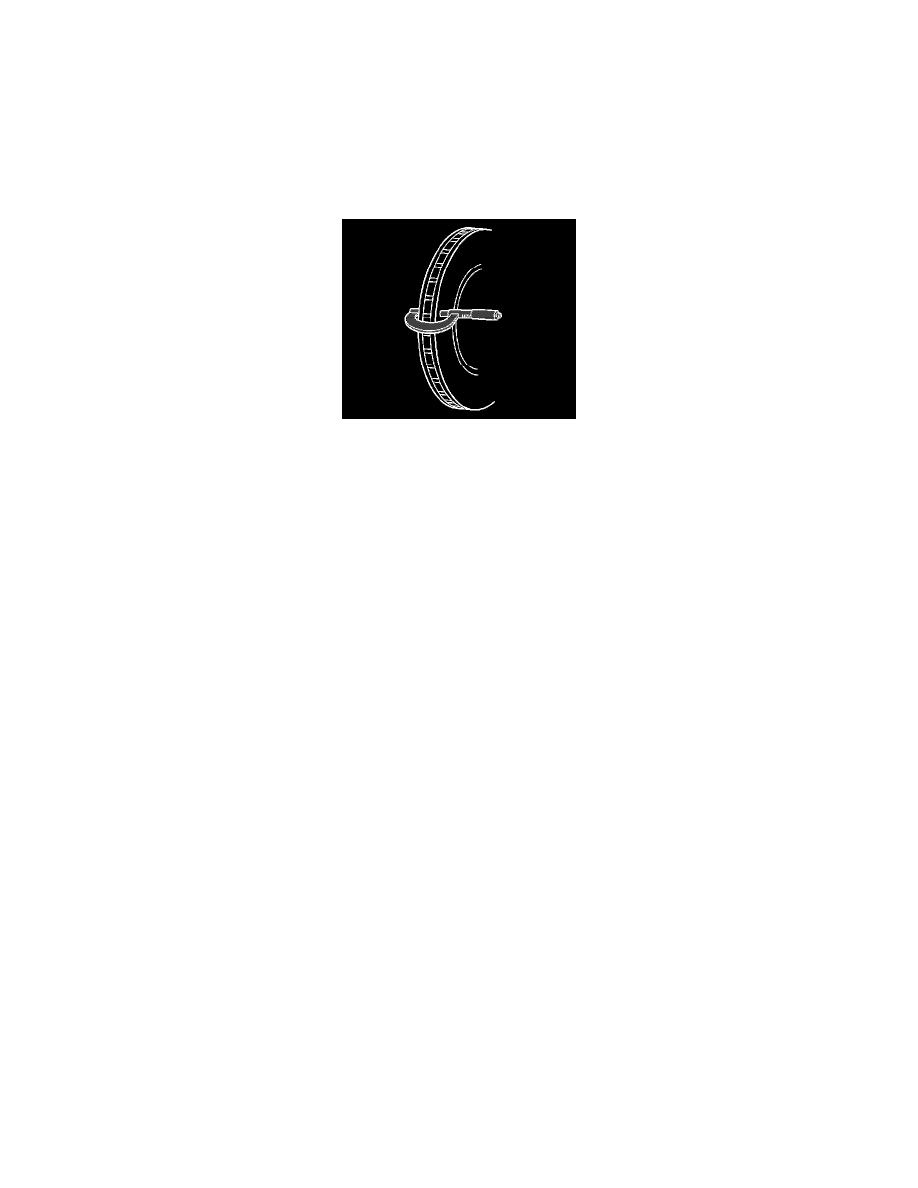H2 V8-6.2L (2008)

Brake Pad/Service and Repair/Rear Disc Brake Pads Replacement) .
2. Clean the friction surfaces of the brake rotor with denatured alcohol, or an equivalent approved brake cleaner.
3. Inspect the friction surfaces of the brake rotor for the following Braking Surface Conditions:
*
Heavy rust and/or pitting
Light surface rust can be removed with an abrasive disc. Heavy surface rust and/or pitting must be removed by refinishing the rotor.
*
Cracks and/or heat spots
*
Excessive blueing discoloration
4. If the friction surfaces of the brake rotor exhibit one or more of the Braking Surface Conditions, the rotor requires refinishing or replacement.
5. Using a micrometer calibrated in thousandths-of-a-millimeter, or ten-thousandths-of-an-inch, measure and record the scoring depth of any grooves
present on the rotor friction surfaces.
6. Compare the groove scoring depth recorded to the following specification:
Brake rotor maximum allowable scoring: 1.50 mm (0.059 in)
7. If the brake rotor scoring depth exceeds the specification, or if an excessive amount of scoring is present, the rotor requires refinishing or
replacement.
Brake Rotor Assembled Lateral Runout Measurement
Brake Rotor Assembled Lateral Runout Measurement
Tools Required
*
J 39544-KIT Torque-Limiting Socket Set, or equivalent
*
J 41013 Rotor Resurfacing Kit
*
J 42450-A Wheel Hub Resurfacing Kit
*
J 45101 Hub and Wheel Runout Gage
*
J 45101-100 Conical Brake Rotor Washers
Caution: Refer to Brake Dust Caution (See: Service Precautions/Technician Safety Information/Brake Dust Caution) .
Important:
*
Brake rotor assembled lateral runout (LRO) exceeding the maximum allowable specification can cause thickness variation to develop in
the brake rotor over time, usually between 4 800-11 300 km (3,000-7,000 mi).
*
Brake rotor thickness variation MUST be checked BEFORE checking for assembled lateral runout (LRO). Thickness variation exceeding
the maximum acceptable level can cause brake pulsation. Refer to Brake Rotor Thickness Variation Measurement (See: Brake Rotor
Thickness Variation Measurement) .
1. Matchmark the position of the brake rotor to the wheel studs if this has not been done already.
Important: Whenever the brake rotor has been separated from the hub/axle flange, any rust or contaminants should be cleaned from the
hub/axle flange and the brake rotor mating surfaces. Failure to do this may result in excessive assembled lateral runout (LRO) of the
brake rotor, which could lead to brake pulsation.
2. Inspect the mating surface of the hub/axle flange and the brake rotor to ensure that there are no foreign particles, corrosion, rust, or debris
remaining. If the wheel hub/axle flange and/or if the brake rotor mating surfaces exhibit these conditions, perform the following steps:
1. Remove the brake rotor from the vehicle. Refer to Front Brake Rotor Replacement (See: Service and Repair/Removal and Replacement/Front
Brake Rotor Replacement) and/or Rear Brake Rotor Replacement (See: Service and Repair/Removal and Replacement/Rear Brake Rotor
